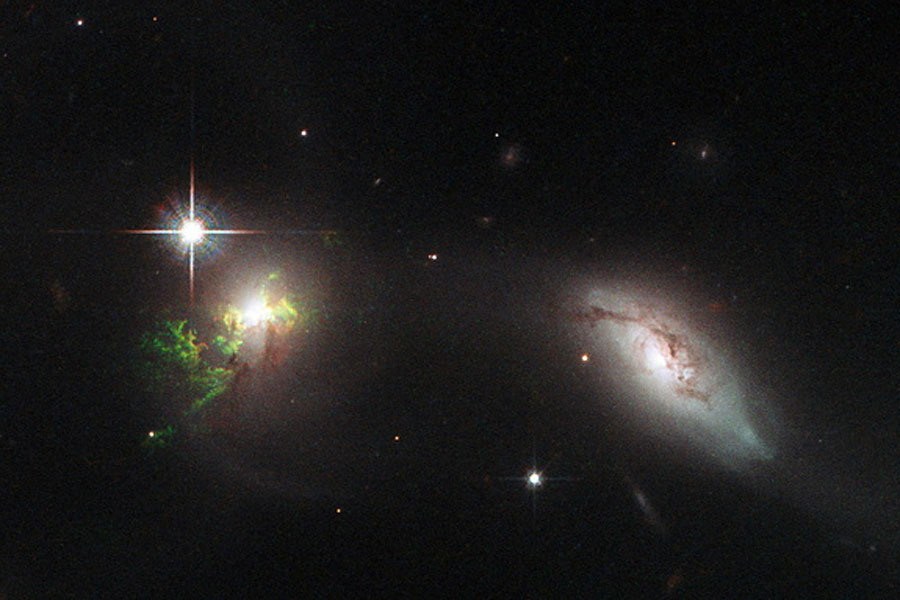With its ability to capture distinct images of distant objects several light years away, the Hubble Space Telescope has photographed eight massive and unusual looped structures which first flickered and then faded. These enormous green clouds of gas orbit their host galaxies and glow due to the radiation emitted by the quasars.
The European Space Agency (ESA) and NASA are partners in the Hubble project.
These bright and eerie glowing objects which were first described in a paper published in the Astronomical Journal are being said to be ‘immense in size, spanning tens of thousands of light-years.’ The reason behind their unusual glow was a quasar – a very luminous and compact region that surrounds a super massive black hole at the center of a galaxy.
“Galactic material falls inwards towards the central black hole, growing hotter and hotter, forming a bright and brilliant quasar with powerful jets of particles and energy beaming above and below the disc of infalling matter. In each of these objects a quasar beam has caused once-invisible filaments in deep cosmos to glow through photoionization,” explain scientists.
These filaments which contain neon, sulfur, helium and nitrogen absorb light from the quasar and then release it slowly over many thousand years. the emerald green hue of these clouds of gas is caused by ionized oxygen.
“Quasars are not bright enough now to account for what we’re seeing; this is a record of something that happened in the past. The glowing filaments are telling us that the quasars were once emitting more energy, or they are changing very rapidly, which they were not supposed to do” said team member Dr Bill Keel of the University of Alabama, Tuscaloosa.
“We see these twisting dust lanes connecting to the gas, and there’s a mathematical model for how that material wraps around in the galaxy. Potentially, you can say we’re seeing it 1.5 billion years after a smaller gas-rich galaxy fell into a bigger galaxy,” he added.
These images sent by Hubble show that these objects are like the remnants of collisions of galaxies.

